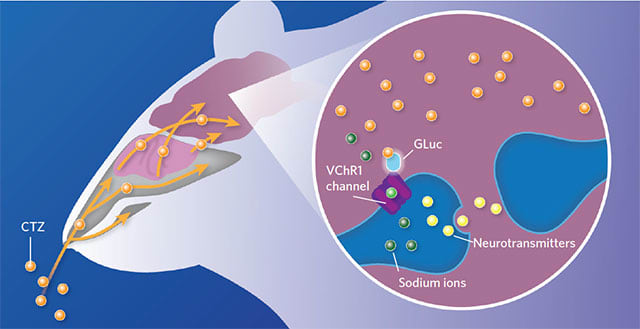- Kelly Finan
- Light in the dark
- Vector Art
A new technique, optochemogenetics, activates light-sensitive channels inside the brain with a drug-like compound administered through the nose. Once the compound, CTZ, has entered the brain, it interfaces with the protein Gaussia luciferase (GLuc) on modified ion channels—in this case a channelrhodopsin protein, VChR1. GLuc emits light, causing the VChR1 to open and allow sodium ions to flow inside the neuron, thus stimulating the cell.
- Collections: Anatomy

